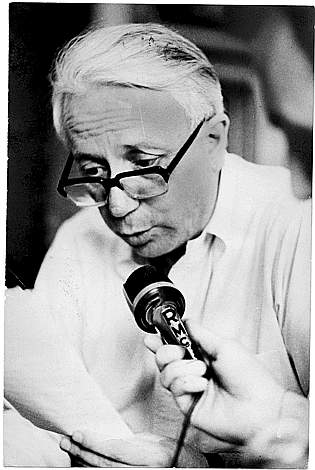
Corriere della Sera is an Italian daily newspaper published in Milan with an average circulation of 246,278 copies in May 2023. First published on 5 March 1876, Corriere della Sera is one of Italy's oldest newspapers and is Italy's most read newspaper. Its masthead has remained unchanged since its first edition in 1876. It reached a circulation of over 1 million under editor and co-owner Luigi Albertini between 1900 and 1925. He was a strong opponent of socialism, clericalism, and Giovanni Giolitti, who was willing to compromise with those forces during his time as prime minister of Italy. Albertini's opposition to the Italian fascist regime forced the other co-owners to oust him in 1925.

Enzo Biagi was an Italian journalist, writer and former partisan.

Panorama is a weekly Italian-language news magazine published in Italy and based in Milan.
il Giornale, known from its founding in 1974 until 1983 as il Giornale nuovo, is an Italian-language daily newspaper published in Milan with an average circulation of 28,933 copies in May 2023. In 2006, it was considered one of Italy's main national newspapers.
Famiglia Cristiana is an Italian weekly magazine published in Alba, Italy. The magazine is a Catholic news magazine and has been in circulation since 1931.

Grazia is a weekly women's magazine that originated in Italy with international editions printed in Albania, Argentina, Australia, Bahrain, Bulgaria, China, Croatia, Colombia, France, Germany. Greece, Indonesia, India, Jordan, Macedonia, Mexico, the Netherlands, Poland, Portugal, Pakistan, Qatar, Serbia, Slovenia, South Korea, Spain, Thailand, and the United Kingdom.

L'Espresso is an Italian progressive weekly news magazine. It is one of the two most prominent Italian weeklies; the other is the conservative magazine Panorama. Since 2022, it has been published by BFC Media.

Alba de Céspedes y Bertini was a Cuban-Italian writer.

TV Sorrisi e Canzoni is an Italian weekly listings magazine published in Segrate, Italy.

L'Europeo was a prominent Italian weekly news magazine launched on 4 November 1945, by the founder-editors Gianni Mazzocchi and Arrigo Benedetti. Camilla Cederna was also among the founders. The magazine stopped publication in 1995. The title returned to the news-stands in 2001 and 2002 as a quarterly, then as a bi-monthly from 2003 to 2007 and a monthly from 2008, until closure in 2013.

Oggi is an Italian weekly news magazine published in Milan, Italy. Founded in 1939 it is one of the oldest magazines in the country.

Il Mondo was a weekly political, cultural and economic magazine founded by Gianni Mazzocchi and directed by Mario Pannunzio. It existed between 1949 and 2014.

Tempo was an illustrated weekly news magazine published in Milan, Italy, between 1939 and 1976 with a temporary interruption during World War II.
Novella 2000 is a weekly celebrity and women's magazine published in Milan, Italy. Founded in 1919, it is one of the oldest publications in the country. It is also one of the most read and well-known Italian gossip magazines.
Noi donne is a monthly feminist magazine published in Rome, Italy. It is one of the most significant feminist publications in the country.

Rinascita was a political and cultural magazine published in Rome, Italy, between 1944 and March 1991. It was one of the media outlets of Italian Communist Party (PCI).

Vie Nuove was a weekly popular magazine published in Rome, Italy, between 1946 and 1978. The magazine was one of the post-war publications of the Italian Communist Party which used it to attract larger sections of the population.
Asso di bastoni was a weekly satirical and political magazine which was headquartered in Rome, Italy. It was in circulation between 1948 and 1957. The magazine was the organ of the Repubblica Sociale Italiana which was established by the members of the Italian Social Movement, a neo-fascist political party.
Cinémonde was a weekly popular film magazine which existed between 1928 and 1971 with six-year interruption due to its ban during the Nazi occupation of France. It was one of the best-selling magazines in its category particularly in the 1950s.














